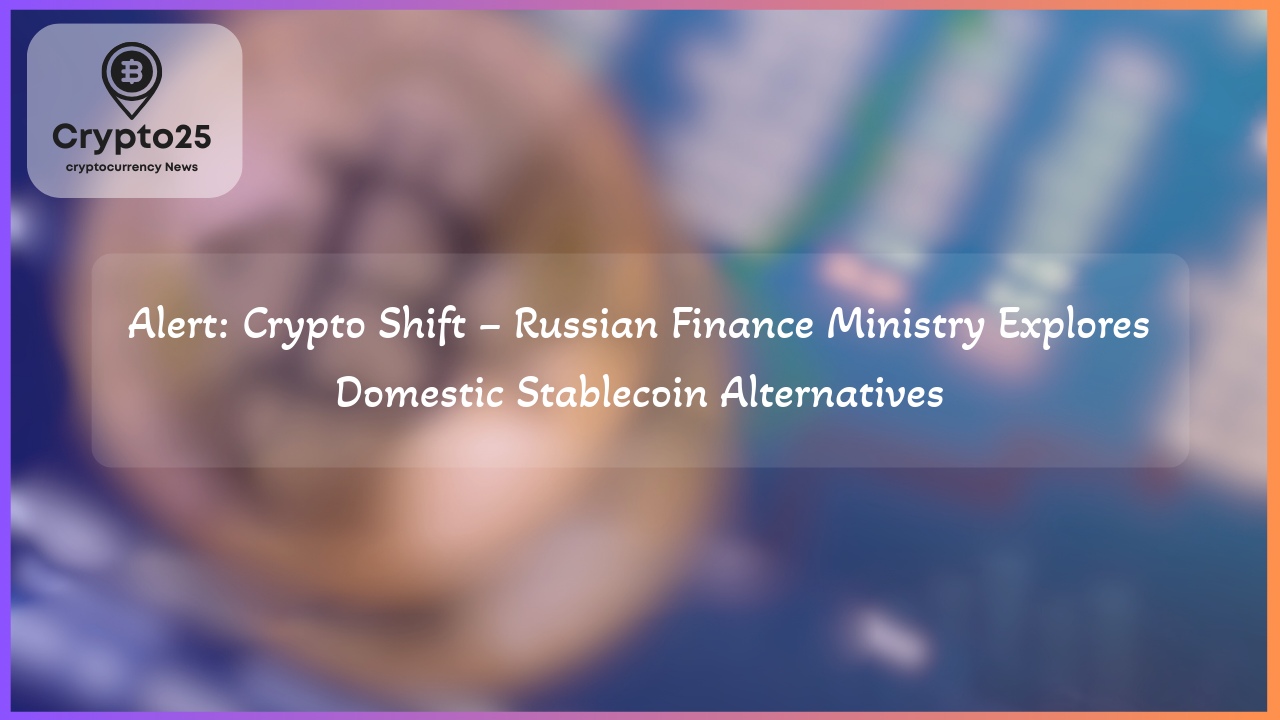
Russia’s Finance Ministry is exploring the possibility of developing domestic stablecoins linked to foreign currencies as an alternative to Tether (USDT), following restrictions placed on wallets associated with the sanctioned Russian crypto exchange Garantex. This move underscores Russia’s broader strategy to insulate its financial system from Western sanctions while continuing to leverage digital assets for global trade.
## Russia’s Push for Domestic Stablecoins Amid Sanctions
Sanctions imposed on the Russian exchange Garantex have severely restricted its access to Tether, the most widely used stablecoin globally. Following these sanctions, Garantex’s wallets—holding over 2.5 billion roubles ($30.12 million)—were frozen. Tether’s decision to freeze these linked accounts was a direct response to sanctions enforced by the European Union.
This significant disruption has motivated Russia’s Finance Ministry to consider developing homegrown stablecoin alternatives. Osman Kabaloev, deputy head of the ministry’s financial policy department, revealed that Russian authorities are looking into “internal tools similar to USDT.” These newly proposed domestically issued stablecoins are expected to be pegged to foreign currencies, offering a controlled medium for international value transfers.
Stablecoins, including USDT, have become essential intermediaries for global crypto transactions, bridging the gap between traditional financial systems and digital assets. According to a Bitwise report, stablecoin transaction volumes reached an impressive $14 trillion in the past year, exceeding Visa’s transaction volume in the same timeframe for the first time.
## A Shift Toward Financial Independence in the Crypto Arena
Russia has maintained stringent regulations on cryptocurrencies, particularly in domestic markets, limiting their use for retail purposes. However, the geopolitical constraints imposed by ongoing Western sanctions have driven the country to re-evaluate its stance on digital assets, especially for international trade. In recent years, Russian firms have increasingly turned to crypto settlements, bypassing traditional financial barriers.
The Finance Ministry’s consideration of stablecoins represents a notable shift in its strategy. While the foundational framework for domestic stablecoin implementation has not yet been disclosed, Kabaloev’s comments suggest a focus on innovation in cross-border payment systems. This aligns with broader efforts to reduce dependence on Western-dominated financial infrastructures. Whether these stablecoins will be pegged to the US dollar or other foreign fiat currencies remains under discussion.
Interestingly, the Bank of Russia has expressed reservations about domestic crypto circulation yet seems open to piloting crypto transactions under regulatory sandboxes. Governor Elvira Nabiullina emphasized that although the institution remains cautious regarding domestic crypto usage, businesses are actively experimenting with blockchain technologies to support foreign trade settlements.
| Title | Details |
|---|---|
| Market Cap | $14 Trillion (Global Stablecoin Transaction Volume) |
## The Role of Stablecoins in Reshaping Russia’s International Trade
The focus on creating a sovereign stablecoin is rooted in Russia’s broader geopolitical strategy to bolster financial sovereignty. By minimizing reliance on foreign-controlled cryptocurrencies like USDT, Russian institutions aim to mitigate operational risks associated with external sanctions. A stablecoin independent of Western frameworks could serve as a practical tool for accessing global liquidity under strict domestic governance.
Moreover, previous reliance on USDT for international trade highlights the importance of stablecoins in maintaining financial connectivity. Amid banking and payment restrictions imposed by Western nations, stablecoins allowed Russian firms to continue cross-border operations. The potential introduction of government-sanctioned stablecoins could further strengthen these efforts, providing a reliable means for transacting on global markets.
While the timeline and specifics of Russia’s stablecoin plans remain unclear, the shift toward crypto-based value transfers signals a deeper commitment to integrating blockchain systems within its financial infrastructure. This potential evolution reflects the growing fragmentation of the global payments ecosystem, where nations are increasingly seeking to build decentralized and resilient alternatives.
As Russia navigates these challenges, its pursuit of domestically issued stablecoins will likely influence regional discussions on crypto regulation and innovation. Not only does this development underscore the flexibility of blockchain technologies, but it also redefines the future role of stablecoins in global economic activities.
